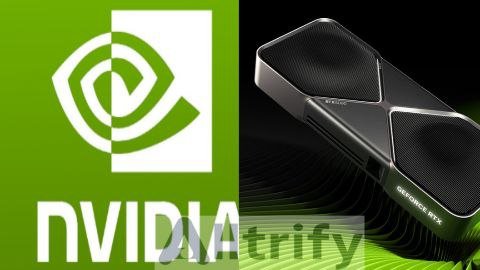Table of Contents
What is NVIDIA Project Digits?
NVIDIA Project Digits represents a groundbreaking approach in the realm of artificial intelligence, embodying a personal AI supercomputer tailored specifically for AI researchers, data scientists, and students. The initiative aims to democratize access to powerful AI computing, enabling a wider range of individuals to harness the capabilities of advanced AI tools and technologies. Core to the hardware architecture of Project Digits is the innovative GB10 Grace Blackwell superchip, which stands as a testament to NVIDIA’s commitment to pushing the boundaries of computational performance.
The GB10 Grace Blackwell superchip is designed to deliver exceptional processing power, facilitating complex AI tasks with greater efficiency. This advanced hardware not only enhances the performance of deep learning models but also streamlines the workflow for researchers and developers, accelerating the pace of AI innovation. With its high-performance architecture, the superchip enables users to tackle challenges previously deemed insurmountable, thus paving the way for transformative breakthroughs within the field.
The potential applications of NVIDIA Project Digits are extensive. Researchers can utilize the platform for extensive data analysis, data preparation, and model training processes. In educational settings, students can experiment with real-world AI projects, gaining hands-on experience that is invaluable for their academic and professional pursuits. Furthermore, the project enhances collaboration among data scientists, allowing for more rapid development cycles and increased knowledge sharing.
In essence, NVIDIA Project Digits signifies a pivotal shift in AI research and development, aspiring to make high-performance computing accessible to a broader demographic. By combining an innovative hardware solution like the GB10 Grace Blackwell superchip with the intention of fostering community and collaboration, NVIDIA is contributing significantly to the evolution of AI technologies and their applications across various sectors.
The GB10 Superchip: Power and Performance
The GB10 superchip represents a significant advancement in power and performance tailored for AI research and development. At its core, the GB10 integrates NVIDIA’s Blackwell GPU, which is revered for its enhanced processing capabilities and efficiency. This superchip is designed to handle the demanding computational requirements of large AI models, ensuring that researchers can train sophisticated algorithms without compromising on speed or performance.
One of the standout features of the GB10 is its array of CUDA cores. CUDA, or Compute Unified Device Architecture, is a parallel computing platform that allows developers to utilize the full potential of NVIDIA GPUs for versatile tasks. The numerous cores enable the processing of multiple threads simultaneously, drastically improving data throughput and reducing execution time in AI applications. This architectural design sets the GB10 apart by providing scientists and developers with the tools needed to tackle complex tasks more efficiently.
In addition to CUDA support, the GB10 superchip incorporates tensor cores, which are specifically optimized for deep learning operations. These cores can execute matrix arithmetic at unprecedented speeds, making them exceptionally suitable for neural network computations. This is paramount for training large models as they significantly enhance performance while consuming less power. Moreover, the collaborative effort between NVIDIA and Mediatek has resulted in a superchip that not only excels in processing capabilities but also in connectivity and energy efficiency. This partnership maximizes the capabilities of the GB10, providing seamless integration into varied environments and ensuring it remains cost-effective.
To sum up, the GB10 superchip is engineered to handle the complexities of AI research, delivering high performance while maintaining power efficiency. Its architectural features and collaborative advancements make it a vital asset for developers aiming to push the boundaries of artificial intelligence.
Seamless Integration with Existing Infrastructure
NVIDIA Project Digits is designed to facilitate an effortless prototyping and scaling experience for developers engaged in artificial intelligence research. One of its key advantages is the use of the Grace Blackwell architecture, which allows for a smooth integration into ongoing projects. This architecture is especially beneficial as it provides a cohesive environment that supports diverse computing tasks while maintaining performance efficiency. By leveraging this advanced architecture, developers can transition to Project Digits without extensive system reconfiguration, preserving their existing workflows.
The deployment flexibility offered by the Linux-based NVIDIA DGX OS further enhances the capabilities of Project Digits. This operating system is tailored for high-performance AI workloads, ensuring that applications can run optimally on NVIDIA hardware. Users can choose to deploy their models either on the NVIDIA DGX Cloud, which provides scalable cloud resources, or within on-premises data centers, thus allowing organizations to select an infrastructure model that best fits their operational needs. This flexibility ensures that teams can maintain data locality while harnessing the computational power provided by NVIDIA’s technology.
Additionally, the wealth of resources available through NVIDIA’s extensive library of AI software is a significant benefit for developers working within the Project Digits environment. This library encompasses a variety of frameworks and tools specifically designed for model development, including well-known platforms like TensorFlow and PyTorch. By providing these resources, NVIDIA streamlines the development process and empowers researchers to innovate with higher efficiency. As a result, users can focus more on the creative aspects of building AI models rather than getting bogged down by technical challenges.
Empowering AI Developers: Tools and Resources
NVIDIA has consistently been at the forefront of AI research and development, providing a robust suite of tools and resources designed specifically for AI developers engaging with Project Digits. The NVIDIA Developer Program is the cornerstone of this initiative, giving developers access to cutting-edge technologies, comprehensive documentation, and a community of experts. This program enables users to explore new methodologies and implement advanced techniques in their AI projects effectively.
One of the standout resources within this framework is NVIDIA NeMo, an open-source toolkit that facilitates fine-tuning and training deep learning models. AI developers can leverage NeMo’s capabilities to create customized models for natural language processing, speech recognition, and more. This multifaceted toolkit supports a range of tasks from building to deploying sophisticated neural networks, enabling developers to refine their AI solutions efficiently.
In addition to NeMo, NVIDIA RAPIDS stands out as a powerful suite for accelerating data science workflows. By integrating seamlessly with popular data science libraries, RAPIDS allows developers to utilize GPU acceleration, substantially increasing the speed of data processing and analysis tasks. This acceleration not only enhances productivity but also encourages experimentation, enabling developers to push the boundaries of data science innovations.
NVIDIA also offers blueprints and microservices that serve as frameworks for building resilient AI applications. These resources are designed to streamline the development process, allowing developers to quickly prototype and deploy their applications with confidence. Furthermore, transitioning AI models from experimentation to production is simplified with the NVIDIA AI Enterprise License, which emphasizes security and support, ensuring that developers can deploy their solutions without compromising safety or efficiency.
The availability of these comprehensive tools and resources underscores NVIDIA’s commitment to empowering AI developers at every stage of their journey, from concept to production. This empowers them to focus on innovation while relying on NVIDIA’s advanced technologies and industry knowledge.





